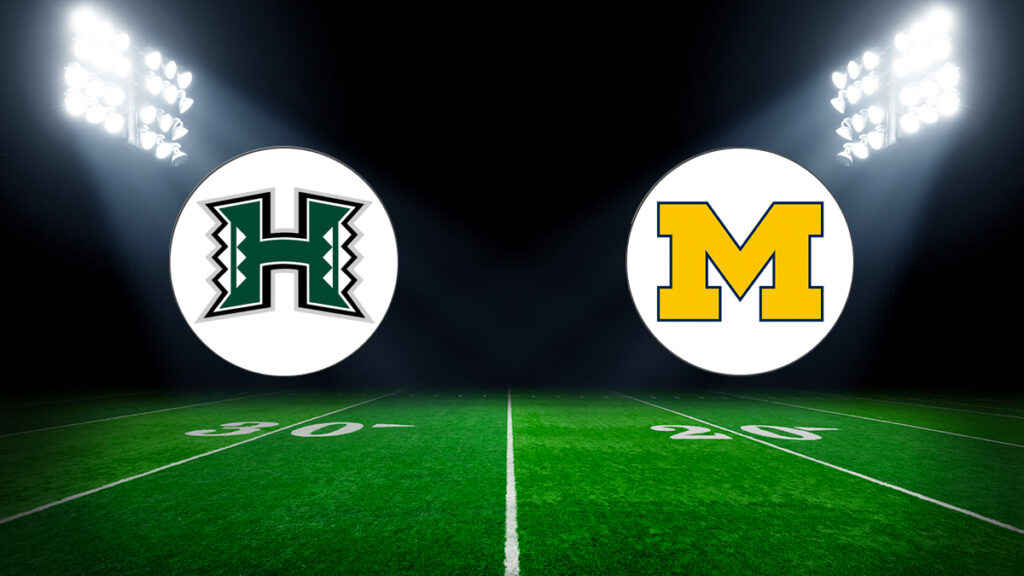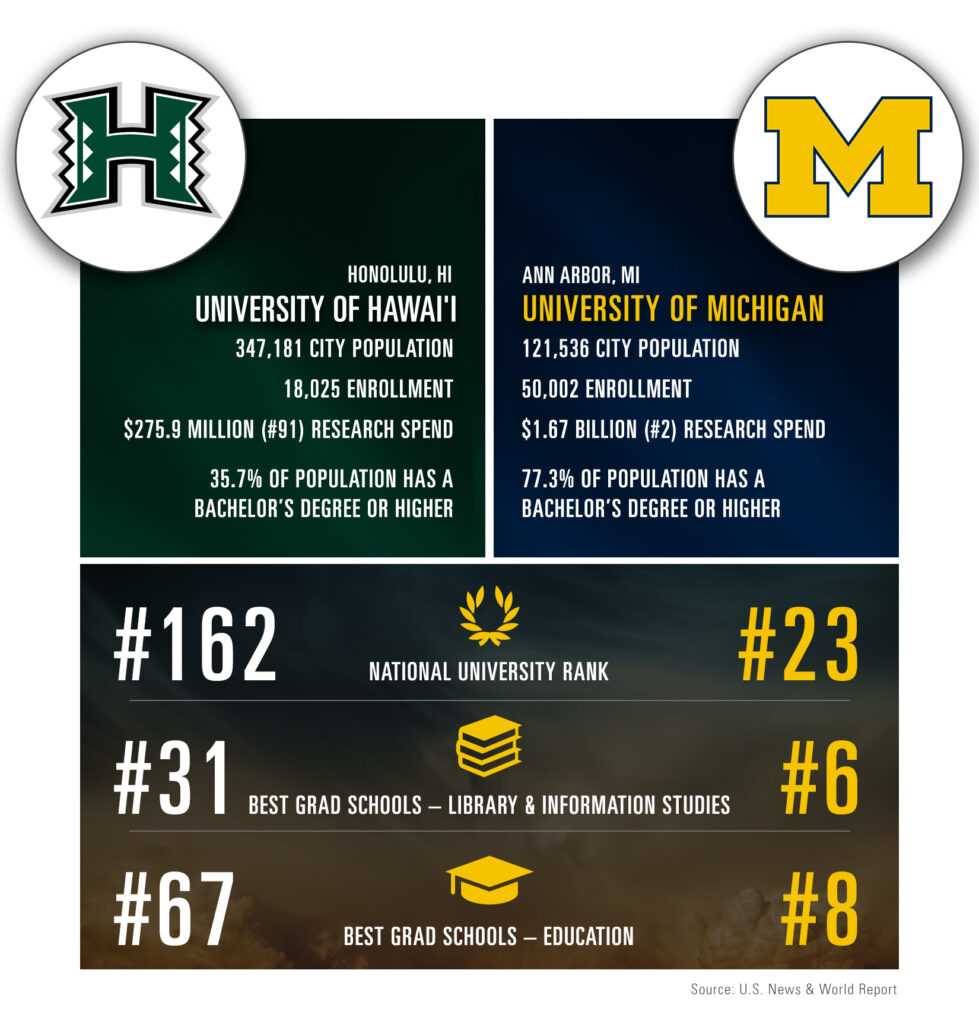
Ann Arbor SPARK’s popular football blog series is back for Michigan’s 143rd season! We use the football season as an opportunity to compare Ann Arbor to cities around the country represented by our U-M football competition. The question is always – how does Ann Arbor compare to other college towns in the U.S.?
Aloha! This week’s matchup between Michigan and Hawaii provides a unique opportunity to compare the Ann Arbor region to one of the most popular tourist destinations on earth. Saturday’s game between the Ann Arbor-based Wolverines and the Rainbow Warriors of the University of Hawai’i marks the fourth matchup between the two programs in history. The last meeting in 2016 resulted in an expected big win for Michigan (63-3).
Honolulu, which means sheltered harbor or protected bay, is the largest city in the state of Hawaii (it is also home to the state’s capital). Honolulu is believed to have been founded as early as 2,000 years ago and was formally admitted to the Union as the 50th state in 1959. The favorable tropical climate, breathtakingly beautiful natural scenery, and prevalent beaches in the Honolulu region bring 7,000-11,000 tourists to the island community on a daily basis (yep, you read that right, DAILY!).

Similar to last week’s comparison to Colorado State, the University of Hawai’i does not outrank the University of Michigan in any categories according to the U.S. News & World Report, but, according to Niche.com, Honolulu does outrank Ann Arbor as one of the healthiest places to live in America (#17 vs. #33 of 228) and as one of the most diverse cities in America (#55 vs. #189 of 228). According to Forbes, the Aloha State’s top two employers are Hawaiian Airlines and the City and County of Honolulu, respectively.
Be on the lookout for our blog posts ahead of each game all season long and be sure to tag us when you share these interesting tidbits with your friends via social media! And, if you want more information like this or are curious to learn more about the Ann Arbor region and what makes it such a great place to live, work, and locate your business in, please reach out to our Director of Research, Melissa Sheldon.
Sources
Where do we get our numbers? And what do they mean?
- Population data comes from the U.S. Census, 2021 Population Estimates. Check out Ann Arbor’s data.
- Enrollment data comes from the Integrated Postsecondary Education Data System (IPEDS). Review University of Michigan data.
- Research expenditure data comes from the National Science Foundation. View the Rankings by Total R&D Expenditures.
- Educational attainment data comes from the US Census 2016-2020 American Community Survey Five-Year Estimates. We look specifically at the population over the age of 25, and the highest level attained. Check out Ann Arbor’s data.
- The rankings come from U.S. News and World Report unless otherwise noted.